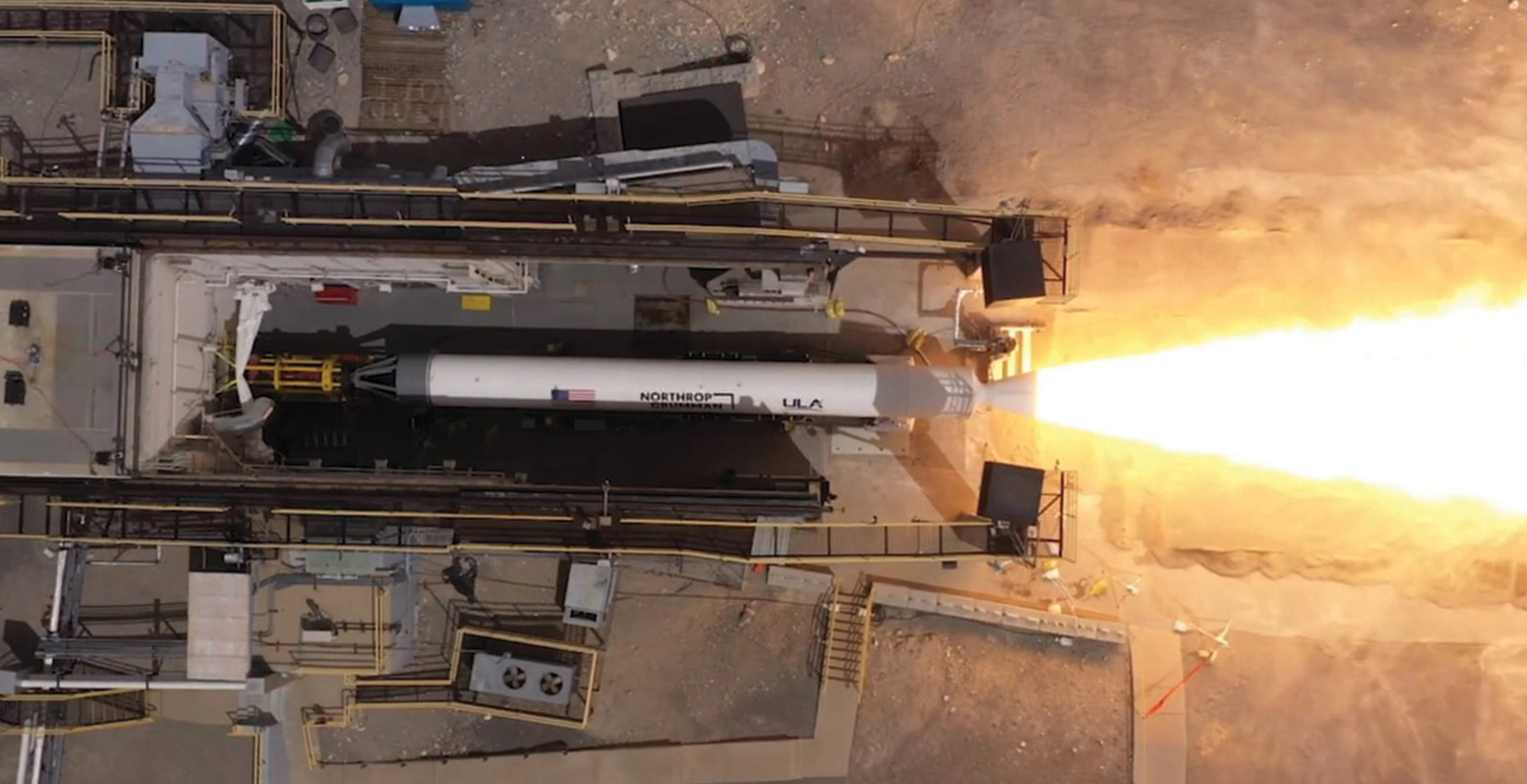Stay Up to Date
Submit your email address to receive the latest industry and Aerospace America news.
The Solid Rockets Technical Committee studies techniques applied to the design, testing and modeling of rocket motors based on solid propellant grains.
NASA and Northrop Grumman conducted the Flight Support Booster-1 test for the Space Launch System rocket in September. The test provided 75% of the initial thrust for the Artemis missions. In June, Northrop Grumman delivered the first set of booster segments to NASA. Earlier in the year, Aerojet Rocketdyne delivered the jettison motor, abort motor and inert attitude control motor. The deliveries and tests were in preparation for the launch of Artemis I in 2021.
In February, Northrop Grumman completed the qualification of the 8×31 kilonewton valve attitude control motor for the Artemis II launch. Moreover, four Atlas V vehicles with Aerojet Rocketdyne boosters and Northrop Grumman separation motors launched the Solar Orbiter satellite, Advanced Extremely High Frequency-6 satellite, X-37B spaceplane, FalconSat-8 satellite and Mars Perseverance payloads into orbit. In July, a Northrop Grumman Minotaur IV lifted a National Reconnaissance Office spacecraft from NASA’s Wallops Island Flight Facility in Virginia with three decommissioned LGM-118 Peacekeeper missiles and an Orion 38 fourth-stage motor.
From February to August, three large booster tests were carried out on Northrop Grumman’s OmegaA second stage and GEM-63XL, a 63-inch-diameter (160 centimeter) Graphite Epoxy Motor, as well as a 53-inch-diameter (134 centimeter) demonstration motor by Aerojet Rocketdyne. While the OmegaA test validated the targeted ballistics, thermal and steering performance, the smaller motor’s demo helped to verify the affordability and performance of future U.S. Air Force strategic missiles. As for the strap-on GEM-63XL, which United Launch Alliance intends to use on its Vulcan Centaur, the tests confirmed the projected ballistics.
The U.S. Navy fired two unarmed life-extension Trident II (D5LE) three-stage missiles from the USS Maine (SSBN-741) over the Pacific Ocean in February. Lockheed Martin manufactured the D5LE missiles, and the tests brought the total number of Trident launches to 178.
Raytheon and the U.S. Navy flight tested a dual-pulse SM-2 missile from the White Sands Missile Range in New Mexico in February. The test was part of a return to production campaign, which has exceeded 2,700 flights. Also at White Sands, Lockheed Martin tested its Precision Strike Munitions surface-to-surface missile in March and April before further testing an upgraded Patriot PAC-3 MSE; the latter was shown to be highly effective at intercepting and destroying a ballistic missile target.
Several qualification tests for the Europropulsion P120C and Avio Zefiro 40 motors — with the third one on the P120C completed in October — will enable the integration of these motors into the upcoming first flights of the Ariane 6 and Vega-C vehicles scheduled for the second half of 2021. In September, the Vega returned to flight after an unexpected launch failure in July 2019. The team identified and corrected second-stage flaws in Zefiro 23, which enabled the rapid return to flight of Europe’s new Small Spacecraft Mission Service satellite dispenser. Furthermore, the European Space Agency concluded in August its review of the Experimental Modelling of Alumina Particulate project, which the German Aerospace Center led with Swedish and Italian support. In June, the French submarine Le Téméraire launched an unarmed M51 ballistic missile from the Caribbean to the North Atlantic Ocean. The M51 consists of a three-stage solid rocket motor designed by the Ariane Group.
The Japanese HII-B vehicle with four SRB-3A strap-on motors made its last flight from the Tanegashima Space Center in May, delivering supplies to the International Space Station. Additionally, China launched two Kuaizhou three-stage all-solid vehicles and one Long March-11 four-stage vehicle in the first half of 2020.
Contributors: Filippo Maggio and Agostino Neri
Related Posts
Stay Up to Date
Submit your email address to receive the latest industry and Aerospace America news.




